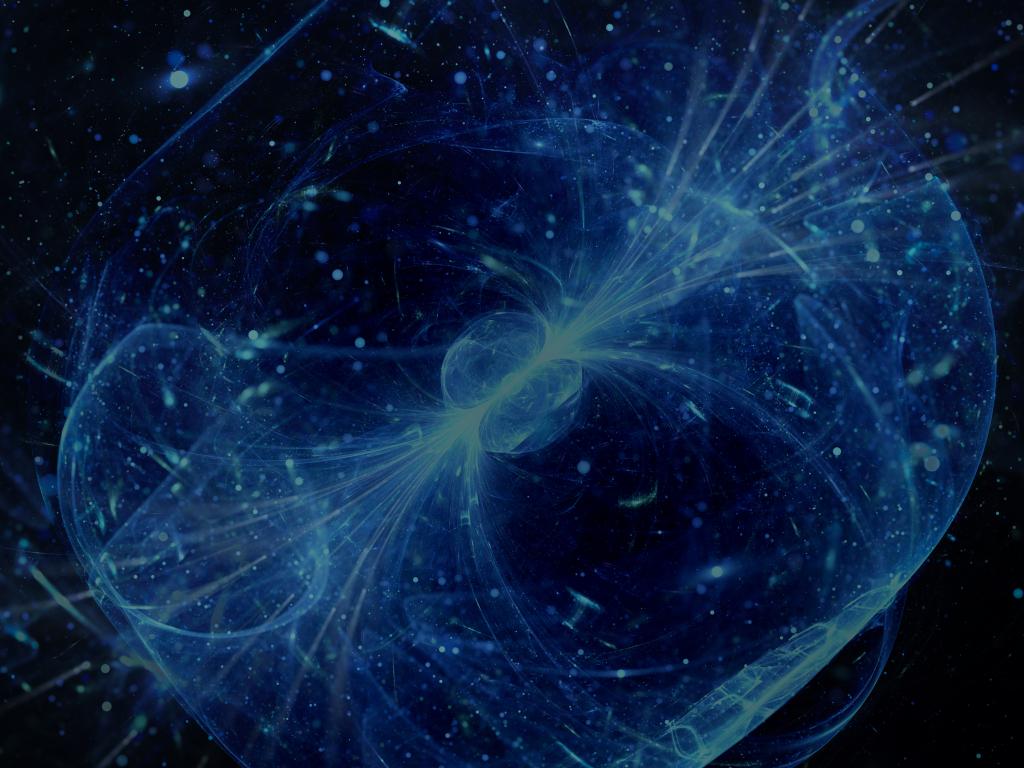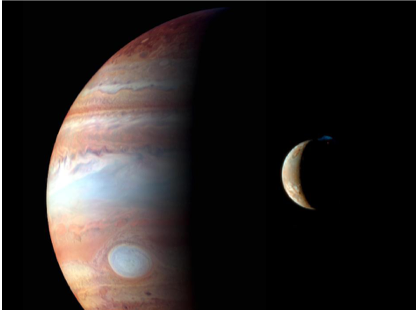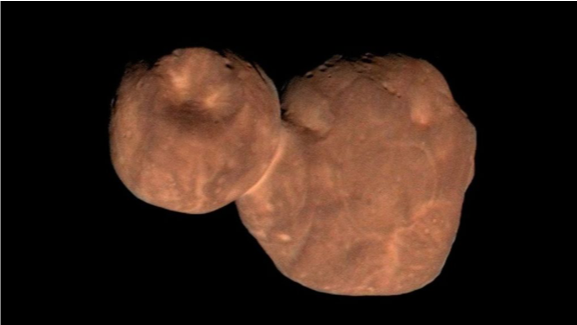Admission CTAs
Discovering the Beginning of the Planets’ Formation
with its moon Io (to center right), taken during the spacecraft
flyby in February 2007. Courtesy NASA/New Horizons.
It’s been five years since New Horizons made its historic visit to Pluto marking the completion of NASA’s more than 40-year-long mission to visit all nine planets in our solar system. However, few may know that New Horizons had already made history during is gravity sling-shot flyby of the giant planet Jupiter in February of 2007 – about a year and a month after its launch from Earth. Scientists planned this sling-shot maneuver to help speed up the spacecraft in order to get it to Pluto faster. While passing Jupiter, New Horizons helped scientists discover a previously unknown volcano on Jupiter’s moon Io ejecting material more than 200 miles above its surface. New Horizon’s left Jupiter’s system through the magnetic “tail” of Jupiter’s enormous planetary magnetic field – a first for robotic spacecraft exploration. No spacecraft has traveled a planet’s magnetic trail, including Earth.
After New Horizons reached Pluto, its mission was far from over. NASA adjusted the spacecraft’s trajectory to travel towards an object one billion miles further away from Pluto. New Horizons flyby of that object, now known as Akorroth, occurred in January 2019. Akorroth is two flat and roundish objects, one about 20 km and the other about 35 km in diameter, stuck together on their sides.
to be left over from the period of planet formation four and a half
billion years ago. Courtesy NASA/New Horizons
Amazingly, Akorroth is made of debris left over from the formation of the planets 4.56 billion years ago. It is an object that is primordial, i.e., it has not changed since its formation. Studying Akorroth is like using a time machine to take us back to the first moments of our solar system’s formation to see what materials were present. The structure of the object also gives scientists important clues as to how these materials came together to form planets. The New Horizons observations of Akorroth is rewriting textbooks on our understanding of how planets form.
Michael E. Summers is a Professor of Planetary Science and Astronomy in the Department of Physics and Astronomy at George Mason University.


